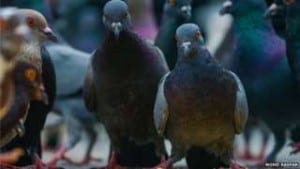
by Pigeon Patrol | Jan 13, 2016 | 4-S Gel Bird repellent, Bird Deterrent Products, Bird Netting, Pigeon Patrol's Services
 ABERDEEN, SD – We’ve all seen them. Some of us have maybe even cleaned up messes left by them.
ABERDEEN, SD – We’ve all seen them. Some of us have maybe even cleaned up messes left by them.
Cities across the country and here in KELOLAND are looking at ways to fight a pigeon problem. The issue made its way to the Aberdeen City Council Monday.
“They continue to be a continuous problem and they do cause quite a bit of damage and they’re a health hazard,” animal control officer John Weaver said.
Aberdeen city manager Lynn Lander wants to contract with a professional to fight the problem. Lander says the goal isn’t to eliminate the birds, but rather to control the population.
The service would cost $7,250 a year, Lander said. Owners would still need to play a part in guarding their property from pigeon damage.
“We would go to specific buildings to disrupt the nesting process because a typical pair can have as many as 20 offspring and a wild pigeon can live up to 10 years,” Lander said.
Pigeons have caused damage to public and private property in Aberdeen. The Aberdeen Police Department has a device that runs to a vent on the roof. Pigeons nested in that vent, dropping eggs and droppings right down into the building.
“Very annoying,” Daryl Van Dover with the Aberdeen Police Department said. “The pigeons have been quite a problem for some time.”
“Through my research and talking to various different municipalities, we all have the same problems,” Lander said.
There are already efforts underway to cut down on the number of pigeons in town. The Aberdeen Downtown Association manages a netting program. Through that program a man recently captured and hauled more than 500 birds from the Hub City, Weaver said.
Lander wants the additional pigeon population control to target problem areas and supplement efforts already taking place.
At the police station, workers have already tried blocking birds from the vent but say they’re running into issues again.
“We’re attempting to screen them out once again and hopefully that’ll take care of the problem,” Weaver said.
About Pigeon Patrol:
Pigeon Patrol Products & Services is the leading manufacturer and distributor of bird deterrent (control) products in Canada. Pigeon Patrol products have solved pest bird problems in industrial, commercial, and residential settings since 2000, by using safe and humane bird deterrents with only bird and animal friendly solutions. At Pigeon Patrol, we manufacture and offer a variety of bird deterrents, ranging from Ultra-flex Bird Spikes with UV protection, Bird Netting, 4-S Gel and the best Ultrasonic and audible sound devices on the market today.
Voted Best Canadian wholesaler for Bird Deterrent products four years in a row.
Contact Info: 1- 877– 4– NO-BIRD (www.pigeonpatrol.ca)
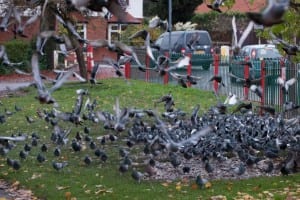
by Pigeon Patrol | Jan 11, 2016 | Bird Deterrent Products, Bird Netting, Pigeon Spikes

FILE PICTURE – Pigeons on a suburban British street. Tenants are in flap after getting a badly written letter from the council threatening to evict them – for FEEDING PIGEONS. See swns story SWPIGEON. They received the missive, littered with grammatical mistakes, suggesting that a “spy” had been hired to find out who had been feeding the birds. The hand signed letter, purporting to be from Islington Council in north London, states that the feeding had led to a rise of pigeon excrement and made the area look an “unsightly mess”.
FIREFIGHTERS were called to deal with a seagull trapped in roof netting in Shoreham.
The RSPCA was called out by the householders to a property in The Herons on Sunday morning.
Shoreham firefighters were then called at 12.22pm to help free the bird from netting around the chimney.
The crew was at the scene for an hour and used a roof ladder and small tools to release the gull, then left it in the care of the RSPCA officer.
Liz Wheeler, RSPCA inspector, said: “We see this kind of thing happening all the time during the summer months.
“People put netting on their rooftops to deter birds from nesting but it’s often not put up properly, causing birds to become trapped and to suffer.
“It is an offence to intentionally trap wild birds like gulls, so we are asking people to be mindful of their actions and make sure that if they do use netting, they install it correctly and regularly check and maintain it.
“We spend all summer getting trapped gulls out of roof netting and it’s easily avoidable.”
About Pigeon Patrol:
Pigeon Patrol Products & Services is the leading manufacturer and distributor of bird deterrent (control) products in Canada. Pigeon Patrol products have solved pest bird problems in industrial, commercial, and residential settings since 2000, by using safe and humane bird deterrents with only bird and animal friendly solutions. At Pigeon Patrol, we manufacture and offer a variety of bird deterrents, ranging from Ultra-flex Bird Spikes with UV protection, Bird Netting, 4-S Gel and the best Ultrasonic and audible sound devices on the market today.
Voted Best Canadian wholesaler for Bird Deterrent products four years in a row.
Contact Info: 1- 877– 4– NO-BIRD (www.pigeonpatrol.ca)
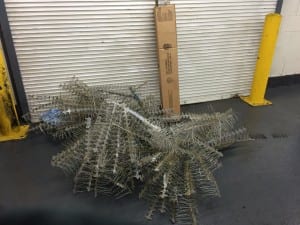
by Pigeon Patrol | Jan 10, 2016 | 4-S Gel Bird repellent, Bird Deterrent Products, Bird Netting, UltraSonic Bird Control
 DUBAI, United Arab Emirates—In 2010, an English-language newspaper in Dubai ran a cover story titled Pigeon Impossible: Rats With Wings. “Pigeons have become a nuisance in the city, leaving many residents exasperated,” the report said. “These birds which have been breeding uncontrollably are messing up property with their droppings.” It detailed how pigeon waste was corroding roofs, windows, machinery, car paint, and infecting air conditioning systems. A public health official lamented the “serious” problem, but said that there was no way to count the number of pigeons that were relieving themselves across the city.
DUBAI, United Arab Emirates—In 2010, an English-language newspaper in Dubai ran a cover story titled Pigeon Impossible: Rats With Wings. “Pigeons have become a nuisance in the city, leaving many residents exasperated,” the report said. “These birds which have been breeding uncontrollably are messing up property with their droppings.” It detailed how pigeon waste was corroding roofs, windows, machinery, car paint, and infecting air conditioning systems. A public health official lamented the “serious” problem, but said that there was no way to count the number of pigeons that were relieving themselves across the city.
The report pointed out that Switzerland had experimented with pigeon contraceptive pills, Britain had hired air gun–wielding snipers to shoot pigeons off buildings, and the United States had used plastic models of birds of prey to scare them off airport runways.
Dubai has been called “the Manhattan of the Arab world.” Over the past three decades, as the United Arab Emirates rapidly developed, it had been preoccupied with breaking world records: It now has the world’s tallest building, largest mall, longest driverless metro, and fastest steel rollercoaster. But an onslaught of pigeon droppings didn’t fit the city’s glittering public image.
The city’s growth was accompanied by a growth in the pest population, including pigeons. A proliferation of pest control firms, now over a hundred in Dubai, was accompanied by a niche market specializing in bird control, many of them employing falcons—natural predators of smaller birds as well as a prized status symbol for the Emirati elite. At the upper end of the market, falcons now travel on private jets with royals from the Persian Gulf on hunting expeditions across the world. In 2010, the UAE led a submission to UNESCO, the United Nations’ cultural agency, eventually having falconry, a tradition dating back at least 4,000 years, recognized as an example of intangible cultural heritage. But thanks to the pigeon problem, falcons are being put to work in less glamorous occupations as well.
One morning in January, a flock of pigeons with bobbing heads, their rainbowlike neck feathers sparkling, occupied a railing on a sand-bleached luxury hotel. The hotel sits in a palm-tree–shaped artificial archipelago, the Palm Jumeirah, on the southern coast. The pigeons bumbled near the Gold Suites, rooms that came with gold furnishings, rain showers, and a private butler to pack bags and shine shoes.
A few weeks earlier, a family at a resort nearby had been attacked by crows, one of them digging its claws into a guest’s head, requiring first-aid with painkillers and icepacks.
“These feral birds,” said Hendri Du Toit, an urban falconer, squinting at the Gold Suites. “They won’t be here for long because Marley has come.”
Marley, a saker falcon with gold-flecked wings, was blindfolded and perched on Du Toit’s arm. He was born and bred in Dubai, even though saker falcons, recognized by their brown upperbellies and horizontal pursuit, usually breed around the northern Himalayas. Marley had traveled to this hotel sitting inside the boot of an SUV that barreled past skyscrapers with mirrored windows and marble megaliths. Another saker falcon, Ziggy (who is not Marley’s son), waited in the boot while Marley finished his assignment.
Du Toit, who grew up in South Africa, has been a full-time falconer in Dubai for three years, working for his mentor Peter Bergh, who runs a falconry firm specializing in bird control and entertainment shows.
Marley’s job was to scare, not kill, Du Toit said, attaching a transmitter to the falcon’s back to track his location. He had been trained to circle around, sending the pigeons fleeing in dust, dirt, panic, and then return to his falconer, who would reward him with a big feathery chunk of quail meat.
Du Toit lifted the leather hood that covered Marley’s eyes, and the bird looked around hysterically, his eyes shining like black marbles. On one side he saw a constellation of deck chairs, beach umbrellas, and a water-dipped skyline, and on the other, a row of great buildings, facades, and railings where pigeons, crows, and Indian mynas could be hiding.
He settled on top of a white beach umbrella.
“He’s lazy today because there isn’t a lot of wind,” Du Toit said. “So we’ll let him follow us around for a bit.”
Du Toit walked along the beachfront, a piece of quail tucked into his pocket, and Marley hopped closer, one umbrella to the next.
“Why is he following this silly man?” Du Toit said. “Because he knows I have his lunch.”
Marley finally took off, heading for the Gold Suites, sending the flock of pigeons into delirium. He knew the area well, Du Toit said, because he’d been flying here three times a week for two years as part of the falconry firm’s winter team. The summer team was currently in the molting chambers, changing feathers under artificial light, to get ready for bird control during the summer. (Molt is triggered by longer daylight hours, when the bird perceives food to be in abundance and invests in feather growth. To avoid featherless falcons being scorched in the testing Dubai summer, molting was being artificially stimulated in advance.)
Marley had never killed a pigeon during his pest-control rounds because then “the pigeon family will know it’s safe for the next day or two,” Du Toit said. “We don’t want that.”
The hotel kept a monthly record of the number of complaints from pigeons. A drop in complaining guests meant Marley was doing well, and an increase (which usually came in winter when guests preferred to dine outdoors) meant he needed to expand his route and flying time.
Du Toit kneeled and swirled a rope with a piece of quail tied to one end, and Marley dived for it. He was back on his falconer’s arm, being fed, hooded, and sent to his “happy place,” in Du Toit’s words.
On Fridays, Marley’s duties extended to posing for photos with hotel guests who were looking for a new display picture. “He doesn’t mind being around people,” Du Toit said. “But at the end of the day, he’s a hunting companion and not a pet.”
Bergh, the man Du Toit reports to at Royal Shaheen, the falconry firm, started his business eight years ago with two birds. “Today we have 11 guys and 85 birds,” he said. “Because falconry is one of those things that is like a disease. It kind of grabs you from the inside and doesn’t let you go.”
If you break down Bergh’s features into slight eyes, wide smile, sunburnt nose, it does not capture the boyhood wonder with which he recounts every experience.
“Flying falcons in the middle of a concrete jungle is hardcore. It’s a really tough form of falconry,” he said. “The birds come back because I’m their food provider, they don’t come because they like me or think I’m a nice guy. They’re creatures of habit. So they’re thinking, ‘If I come back to Pete, I get a big fat juicy meal but if I catch a pigeon, I get one small juicy meal.’ ”
Falconry essentially is the art of managing a falcon’s appetite, he said. “You’re standing here on the beach, when the falcon starts disappearing around the back of the hotel, you’ve now lost visual contact, your communication is gone, your mobile signal is gone. If the bird now sees a pigeon across the road, what’s stopping the bird from deciding to chase that pigeon? Nothing really, other than the bird’s loyalty to fly around the building and seek comfort in seeing Pete again. In an urban environment, the margin for error is huge, you’re radically increasing the possibility of something going wrong.”
Bergh, 36, grew up on a sugarcane farm in Pietermaritzburg, a small town outside Durban in South Africa, studying until the 10th grade and taking care of his parent’s horses. At 17, he became a professional player of polocrosse (a sport that marries polo and lacrosse), first representing his country and then playing for a rich coffee farmer’s team in Zimbabwe. Five years later, he came to Dubai to become a guide at a desert resort that kept horses, camels, and falcons.
“It fascinated me that the falcon would go and kill something, you could make a trade and put the whole kill in your pocket, and it would take a little reward to do it again,” he said. “I read all the books there were to read and I spent every spare minute I had at the mews,” a place where falcons are kept.
He then trained under a falconer in Dubai whose main business was bird control, and after two years, he quit to set up his own business, partnering with a falcon breeder who had the patronage of a sheikh from Dubai’s ruling family. The breeder would lend his birds, which cost anything from $1,500 to a million. The price of a falcon is determined by bloodline, breed, size, and gender. The most sought-after is the female gyrfalcon, larger by almost a third compared to the male, and originating from the Arctic.
“Contrary to popular belief, there is no such thing as an Arabian falcon. They don’t come from here, it’s too hot,” he said. “It was when they would migrate over the Middle East on their way to Africa that the Bedouin learned to catch their falcons and train them. At the end of winter, they would simply untie them and release them back to the wild. A beautiful system, hey?”
Bergh spends his spare mornings innovating for tourism shows, where the majesty of the falcon can be fully displayed. “I’m trying to push a lot of my attention on the tourism stuff. We can keep doing bird control but we know that Dubai wants to go for Expo 2020, we know how many people are coming to the Dubai airport, and that there’s a huge market for this,” he said.
One of his ideas is to get his falcons to chase a radio-controlled plane that he modified to resemble a houbara bustard, the bird traditionally hunted by the Bedouin, and now pushed to near extinction, prompting governments to cancel hunting permits to Arab royalty.
One morning in March, Bergh was lying flat, his chin buried in sand, in the middle of the 87–square-mile Dubai Desert Conservation Reserve, talking to a black peregrine falcon. He was gently pulling a rope with a piece of quail attached at one end, the falcon first fluttering in defiance, but then hopping along obediently as his bait moved closer.
Three other falcons—Darky, Thunder, and Batman—had been lined up on a metal stand covered with artificial grass. Bergh wielded his kite-shaped toy plane, parts of it glued to an enlarged image of the flaky pattern found on the houbara bustard’s wings. He attached a piece of quail to the plane with a magnet, and Thunder, a peregrine who had now been unhooded, flapped her wings. The plane took off, Bergh maneuvering its movements with a remote, and Thunder leaped in pursuit. The two disappeared into the sky until Thunder finally snatched her lure midair, and the plane dipped.
“She got clever,” Bergh said, sipping his morning coffee. “We need to maneuver more next time.” So far, Bergh has crashed 38 toy planes.
Three other white SUVs pulled over in the desert plateau with falconers who were training a sheikh’s birds with a live pigeon. Bergh waved at them, and they waved back.
Bergh began experimenting with remote-control planes after he watched a sheikh’s falconers use drones to develop a falcon’s muscles. “The way the Arab have traditionally hunted is like here I’m on a camel with my falcon who is wearing his burqa. When they find a hobuara, the hood comes off, and it’s a straight-line sprint. Catch the houbara, put in my pocket, feed my family, and let’s go again,” he said. “We need to understand how dialed-in the Bedouin were to the land. Now imagine what they could have done with technology.”
About Pigeon Patrol:
Pigeon Patrol Products & Services is the leading manufacturer and distributor of bird deterrent (control) products in Canada. Pigeon Patrol products have solved pest bird problems in industrial, commercial, and residential settings since 2000, by using safe and humane bird deterrents with only bird and animal friendly solutions. At Pigeon Patrol, we manufacture and offer a variety of bird deterrents, ranging from Ultra-flex Bird Spikes with UV protection, Bird Netting, 4-S Gel and the best Ultrasonic and audible sound devices on the market today.
Voted Best Canadian wholesaler for Bird Deterrent products four years in a row.
Contact Info: 1- 877– 4– NO-BIRD (www.pigeonpatrol.ca)
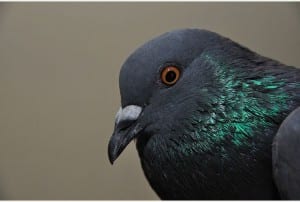
by Pigeon Patrol | Dec 27, 2015 | Animal Deterrent Products, Bird Deterrent Products, Bird Netting, Pigeon Patrol's Services
 If it seems there are a lot less pigeons in Washington Square Park, it’s because there are.
If it seems there are a lot less pigeons in Washington Square Park, it’s because there are.
Earlier last week, on Tuesday afternoon, birdnappers were reportedly out in force on the park’s far west side. In an orchestrated maneuver taking just minutes, the peaceful pigeons were lured to a spot near the Washington Place park entrance, where they were captured by net — they netted three batches — and then whisked away in a van.
Larry the Birdman was near the fountain and missed the abduction of possibly more than 200 birds.
“It happened so fast,” he said. “It was a silver-colored van.”
One member of the cadre who hang out on the park’s western side near the Holley monument said, “We know these birds and some of us have relationships with individual birds.”
Doris Deither, a Community Board 2 member, is among the F.O.B. (Friends of the Birds). She said the pigeon she calls Opal likes her and comes to her as she walks assisted by a walker. Deither said, thankfully, “her bird” is still in the park.
“But they got two of William’s birds,” she said, explaining that William cares for pigeons that are injured.
Seven years ago, the New York Post wrote about “pigeon netting,” the black-market act of snatching pigeons off the streets and selling them for $5 and $10 each, mostly to legal, out-of-state (frequently Pennsylvania) pigeon shoots.
It was believed that the purloined Washington Square pigeons were destined for a similar fate. Diether said word was that the van had New Jersey license plates.
Phew! Some of the lucky survivors, thanking their tail feathers they weren’t scooped up by the birdnappers.
Phew! Some of the lucky survivors, thanking their tail feathers they weren’t scooped up by the birdnappers.
Saturday afternoon at the Holley bust, a memorial service was held for the avian abductees organized by Tina Trachtenberg, an artist and animal advocate. She creates the felt pigeons at Washington Square.
Days later, flowers marked the memorial site and a weathered sign read: “This park is a safe haven for many animals. Today we mourn the tragic death of 200-300 resident pigeons. We loved and cherished their magical presence. They will be deeply missed.”
By Tuesday, flowers and sign were gone.
Joyce Friedman the New York City coordinator at The Humane Society of the United States, read on social media about the memorial and came to the park to learn more.
“I reported it to the N.Y.P.D. Animal Cruelty Investigation Squad,” she said. “We can’t give out any more detailed information, because now it’s an ongoing investigation.”
She reiterated that the investigating officers take it seriously, also mentioning that the same sort of birdnappings took place a couple months ago on the Upper West Side and are also under investigation.
For four days, Tuesday through Friday, security at the Parks Department office at Washington Square Park, the bicycle police on patrol and police in a van watching on Sunday morning were totally unaware of the birdnapping. As of this Tuesday, not all the local patrolling police or Parks employees were aware of the nefarious netting.
However, on Tuesday, Parks spokesperson Crystal Howard warned the pigeon pluckers to beware.
“Don’t steal our animals!” she said in a phone interview. “Pigeons are core to the character of New York City, and it is illegal and dangerous to remove animals from New York City parks.”
Friedman also emphasized that birdnapping is illegal.
“If you see someone doing it, take a picture of the license plate,” she said. “Then call 911. If you become aware afterward, report it by calling 311.”
Early Sunday evening, Haley, a friend of Larry, swung by the park to see if he was all right.
Larry now sits on his usual bench, but no longer bedecked with birds, keeping a vigilant eye on the park’s Washington Place entrance to see if there are any more lurking vans.
“There are surveillance cameras,” he said, hoping they would have caught useful information to bust the birdnappers.
About Pigeon Patrol:
Pigeon Patrol Products & Services is the leading manufacturer and distributor of bird deterrent (control) products in Canada. Pigeon Patrol products have solved pest bird problems in industrial, commercial, and residential settings since 2000, by using safe and humane bird deterrents with only bird and animal friendly solutions. At Pigeon Patrol, we manufacture and offer a variety of bird deterrents, ranging from Ultra-flex Bird Spikes with UV protection, Bird Netting, 4-S Gel and the best Ultrasonic and audible sound devices on the market today.
Voted Best Canadian wholesaler for Bird Deterrent products four years in a row.
Contact Info: 1- 877– 4– NO-BIRD (www.pigeonpatrol.ca)
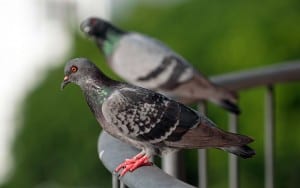
by Pigeon Patrol | Dec 26, 2015 | Bird Deterrent Products, Bird Netting, UltraSonic Bird Control
 A gullA gull
A gullA gull
If you are about to take a holiday in Cornwall beware – the gulls there are said to be on the warpath. Local papers in the south west are full of stories about them robbing people of ice-creams and other snacks, and generally making a nuisance of themselves.
At first sight there is nothing really unusual about this. So far as I am aware gulls have always behaved like this, both here and in other parts of the world. They are very general feeders and instinctive raiders, taking food not only from us but also from other birds. What seems to be different in this case is that most unfortunately (and unusually) they are said to have killed both a small dog and a tortoise. This is enough to involve the Prime Minister: David Cameron has said, somewhat patronisingly, that we need a ‘big conversation’, whatever that is, about the issue.
This was in response to local MPs who are demanding a change in the law so that gulls and their nests can be destroyed. Not only will this not help (more gulls just move in) it is not necessary. The law already provides for control of otherwise protected birds through a licencing system. The answer lies in making buildings and other places where the birds nest or roost unwelcome to them. This is already done with both pigeons and starlings by the use of strips of spikes where they would otherwise perch.
Of course, people being people, whilst some want to kill the gulls others encourage them by feeding. In West Bromwich town centre a large flock of pigeons, boosted by this, has become a mixed flock of pigeons and gulls. This is something I have not previously seen, although the species do have a lot in common. Feral pigeons are rock doves and, as the name suggests, they originally nested on cliffs alongside gulls.
You may have noticed that I have not described the birds as ‘seagulls’, a name never used by ornithologists, and rightly so. Gulls are at home almost anywhere in Britain, witness the breeding colonies in Birmingham city centre and elsewhere locally, where the buildings are just surrogate cliffs to them. Guard your lunch box carefully if you take your break in St. Phillip’s churchyard!
About Pigeon Patrol:
Pigeon Patrol Products & Services is the leading manufacturer and distributor of bird deterrent (control) products in Canada. Pigeon Patrol products have solved pest bird problems in industrial, commercial, and residential settings since 2000, by using safe and humane bird deterrents with only bird and animal friendly solutions. At Pigeon Patrol, we manufacture and offer a variety of bird deterrents, ranging from Ultra-flex Bird Spikes with UV protection, Bird Netting, 4-S Gel and the best Ultrasonic and audible sound devices on the market today.
Voted Best Canadian wholesaler for Bird Deterrent products four years in a row.
Contact Info: 1- 877– 4– NO-BIRD (www.pigeonpatrol.ca)
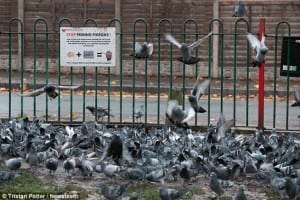
by Pigeon Patrol | Dec 24, 2015 | 4-S Gel Bird repellent, Animal Deterrent Products, Bird Deterrent Products, Bird Netting
 A mystery surrounding a missing flock of pigeons and a white van has been unfolding in Washington Square Park.
A mystery surrounding a missing flock of pigeons and a white van has been unfolding in Washington Square Park.
The Washington Square Park Blog reported Monday that a group of approximately 300 pigeons were lured with bird seed before being scooped up by a net and loaded into a white van by two unidentified men on Tuesday, July 21 at around 3 p.m. The NYPD Animal Cruelty Investigation Squad is currently investigating the case.
Pigeon trapping on private, commercial or public property without a permit is illegal in New York City, however the city does not accept complaints about netting, “the use of nets to collect large amounts of pigeons,” according to NYC.gov.
Artist and pigeon enthusiast Tina Trachtenberg, who is known for the felt pigeons she creates and sells in the park, initially informed the blog of the alleged abduction.
Trachtenberg, who also goes by the name “Mother Pigeon,” says she learned of the incident from a man named Larry, “a constant presence in the park,” who claims to have seen the pigeons placed in the van and taken away, according to the blog. Trachtenberg and her family held a memorial for the 300 missing pigeons on Saturday, July 25.
Trachtenberg believes the motive for the bird-napping is clear, though this has not been confirmed by authorities.
“The person who did this will transport them to Pennsylvania where they will have their wings clipped and be put into a mechanism that will shoot them in the air and men will shoot them for sport,” Trachtenberg posted on Facebook. “Our hearts are crushed.”
There have been reports in the past of pigeon brokers trapping and sell pigeons to people who participate in legal pigeon shootings in Pennsylvania. At these shoots and hunts, pigeons are propelled from a mechanical launcher and shot in midair.
Although these practices do not occur legally in New York, activists are alleging that there is a pattern where large quantities of pigeons are disappearing about a week before these scheduled Pennsylvania shoots take place.
In an interview with the Washington Square Park blog, a spokesperson for the NYC Parks Department pleaded with New Yorkers: “Don’t steal our animals! Pigeons are core to the character of New York City, and it is illegal and dangerous to remove animals from NYC Parks.”
Real estate agent and pigeon owner William Macleod has observed the pigeon flocks in Washington Square Park for eight years. Macleod regularly takes his birds to the park to fly alongside the wild birds and said he noticed a significant decrease in the park’s pigeon population after the July 21 incident. He said four of his banded pigeons are missing.
“I’m absolutely devastated. When I started letting my original two out, Jacko and Jix, I knew I may never see them again,” he said of his red belgian racers, whom he rescued eight years ago from a park garbage can three days after their birth. “But to know that they may be killed is what really upsets me.”
Joyce Friedman, NYC coordinator of the Humane Society of the United States, said there are ways for witnesses to report pigeon netting. “If you witness the netting in action, call 911; try to record license plate, and description of perps and vehicle,” Friedman said. “Witnesses to the recent Washington Square pigeon netting or any other pigeon nettings learned about after the fact should contact 311.”
There is also a $500 reward poster that was created by a concerned NYC photographer, Andrew Garn, looking for anyone with information about the Washington Square Park nettings.
About Pigeon Patrol:
Pigeon Patrol Products & Services is the leading manufacturer and distributor of bird deterrent (control) products in Canada. Pigeon Patrol products have solved pest bird problems in industrial, commercial, and residential settings since 2000, by using safe and humane bird deterrents with only bird and animal friendly solutions. At Pigeon Patrol, we manufacture and offer a variety of bird deterrents, ranging from Ultra-flex Bird Spikes with UV protection, Bird Netting, 4-S Gel and the best Ultrasonic and audible sound devices on the market today.
Voted Best Canadian wholesaler for Bird Deterrent products four years in a row.
Contact Info: 1- 877– 4– NO-BIRD (www.pigeonpatrol.ca)

 ABERDEEN, SD – We’ve all seen them. Some of us have maybe even cleaned up messes left by them.
ABERDEEN, SD – We’ve all seen them. Some of us have maybe even cleaned up messes left by them.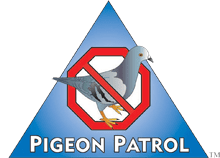



 DUBAI, United Arab Emirates—In 2010, an English-language newspaper in Dubai ran a cover story titled Pigeon Impossible: Rats With Wings. “Pigeons have become a nuisance in the city, leaving many residents exasperated,” the report said. “These birds which have been breeding uncontrollably are messing up property with their droppings.” It detailed how pigeon waste was corroding roofs, windows, machinery, car paint, and infecting air conditioning systems. A public health official lamented the “serious” problem, but said that there was no way to count the number of pigeons that were relieving themselves across the city.
DUBAI, United Arab Emirates—In 2010, an English-language newspaper in Dubai ran a cover story titled Pigeon Impossible: Rats With Wings. “Pigeons have become a nuisance in the city, leaving many residents exasperated,” the report said. “These birds which have been breeding uncontrollably are messing up property with their droppings.” It detailed how pigeon waste was corroding roofs, windows, machinery, car paint, and infecting air conditioning systems. A public health official lamented the “serious” problem, but said that there was no way to count the number of pigeons that were relieving themselves across the city.




